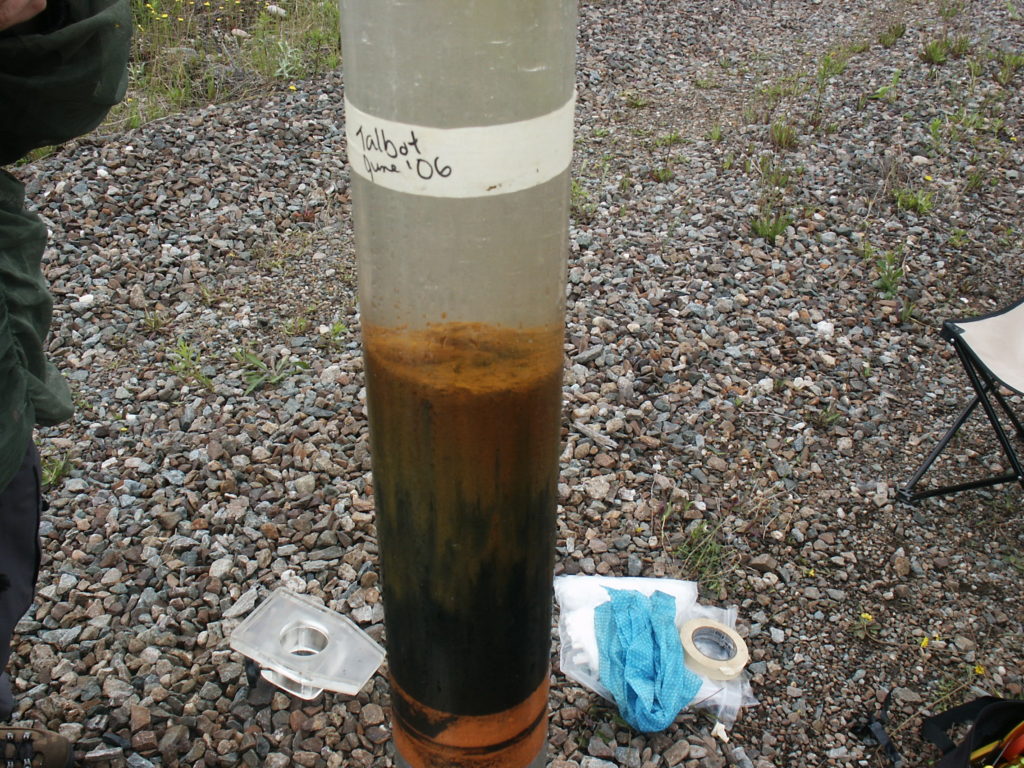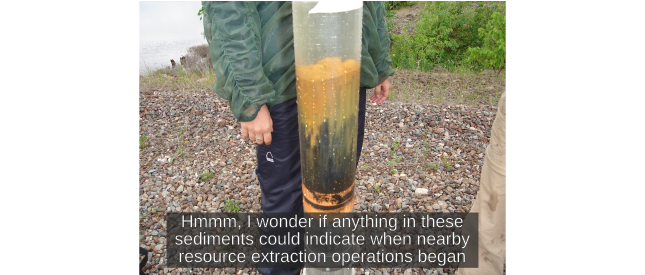“Too deep we delved there, and woke the nameless fear.” – Glóin son of Gróin
Our series on Topical Paleolimnology continues with how the environmental impacts of mining (i.e. resource extraction) can be studied using lake sediments. Mining is the act of extraction of geological materials (e.g. precious metals, base metals, oil, etc.) from the Earth. The adage ‘If it’s not grown, it’s mined’ is a succinct explanation of why environmental impacts associated with resource extraction will always be a topical issue. The modern world is fundamentally reliant on mined resources, and at industrial scales, mining processes can impact surrounding ecosystems in profound ways.
We have touched on the ecological impacts of mining in previous episodes (particularly the History of Paleolimnology series), because industrial emissions associated with resource extraction (i.e. SO2) are fundamental to the development of paleolimnology as a science. However, regional impacts such as acid deposition are often accompanied by site-specific impacts determined by the resource being mined/processed and the characteristics of the surrounding environment. The environmental impacts of a particular mine will also vary through time, with different stressors associated with the:
- Initial mineral exploration activities
- Construction of the mine (from the direct landscape transformation due to the mine itself as well as associated airports, winter roads, etc.)
- Resource extraction and processing (e.g. atmospheric emissions, transportation, waste storage)
- Mine closure and cleanup (as the cleanup will often only apply to the immediate location not the broader landscape)
- Long-term storage of nasty things (e.g. in mine tunnels and drilling sumps)

The effects of mining can persist long after the mine has closed, and we discuss some notable examples of mining operations affecting their environments from across Canada:
- Sudbury Basin, ON – Ongoing nickel and copper mining operations since the 1890s. One of the largest sources of SO2 emissions on the planet. Acid deposition and acidification of surface waters de-vegetated the region. However, the ongoing remediation efforts are often cited as an environmental success story.
- Giant Mine, NWT – Gold mine in Yellowknife that was in operation from the 1930s until 1999. Roasting of arsenopyrite released significant amounts of arsenic trioxide dust. Initially the dust was released into the surrounding landscape; however, the mine now acts as long-term storage for enough captured arsenic trioxide to kill every human being on Earth.
- Athabasca Oil Sands, AB – Mining of bitumen (form of petroleum) began in 1967 and continues to this day. The scale is enormous, deposits span 141,000 km2. Landscape impacts result from the mining and separation of the hydrocarbons from sand. Large tailing ponds, lots of downstream concerns.
- Ekati Diamond Mine, NWT – First of several large diamond mines established in the Barren Lands NE of Great Slave Lake up towards the arctic archipelago. Ekati opened in 1998 in a relatively pristine environment, and the operation has raised concerns of the fertilization and calcium enrichment of nearby surface waters.
Although the specific approaches can be quite different, paleolimnology techniques are very useful for studying the long-term impacts of mines. As it can provide information on baseline or ‘pre-impact’ conditions, and through a wide variety of indicators address specific questions related to:
- Direct impacts (i.e. the metal themselves)
- Impacts related to the processes used (e.g. acidification)
- Indirect impacts on the local biology and ecology
- Chemical vs. biological recovery
Impacts in the immediate vicinity of mining operations can be extreme. For example, lakes downwind of an iron sintering plant near Wawa, ON, became so enriched with iron that the initiation of mining operations is apparent just by looking at a sediment core.

The use of paleolimnological techniques to study mining impacts is a field of study that will continue to be in demand. Mining operations are widespread across the planet, and many environmental stressors are not recognized until after they have become a problem, and disentangling background levels/identifying ‘normal’ conditions will always be tricky as these areas are mined for a reason.

